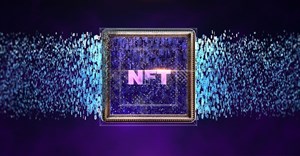Subscribe & Follow
#CannesLions
- The new standardCarl Willoughby
- All the South African winnersDanette Breitenbach
Trending
-

-
 Temu app considered malicious malware in new US lawsuit [Updated]Lindsey Schutters
Temu app considered malicious malware in new US lawsuit [Updated]Lindsey Schutters -

-

-
 #YouthMonth: Meet Tribeca Public Relations new facesKarabo Ledwaba
#YouthMonth: Meet Tribeca Public Relations new facesKarabo Ledwaba -

NFTs and the metaverse: How to protect your brand within this digital phenomenon

The metaverse also creates a platform for online shopping which includes the purchasing of NFTs. This virtual reality creates a novel experience for the consumer and an extremely profitable income stream for online shopping and e-commerce.
It is therefore important for brand owners to understand how to optimise their trade mark protection on this digital and virtual platform. Even though one can argue that already existing trade mark law should be sufficient to enforce trade mark rights in the metaverse, there is a reason why NFT and virtual trade mark filings increased by more than 500% between August 2021 and January 2022 in the United States Patent and Trademark Office (USPTO).
While trade mark legislation catches up to this new phenomenon, we reviewed some of the virtual trade mark filings at the USPTO. Most virtual reality marks were filed in classes 9, 35 and 41, which cover virtual goods in virtual spaces. Depending on the brand (especially clothing brands) the specifications as applied may read as follows:
Class 9: Downloadable virtual goods, namely, computer programs featuring footwear, clothing, headwear for use online and in online virtual worlds.
Class 35: Retail store services featuring virtual goods, namely, footwear, clothing, headwear; online retail store services featuring virtual merchandise, namely, clothing, footwear, headwear for use in virtual environments
Class 41: Entertainment services, namely, providing online, non-downloadable virtual footwear, clothing, headwear for use in virtual environments
Victoria Secret, Ralph Lauren, Gucci, Louis Vuitton, Coca-Cola, Saint Laurent, Valentino, Balenciaga, Alexander McQueen, Prada and sports brands like Adidas and Nike filed for trade mark protection to cover their goods being sold as NFTs and being used in the metaverse. Mcdonald's has also recently filed in class 9 for “Virtual food and beverage products. Downloadable multimedia files containing artwork, text, audio and video files and non-fungible tokens”.
Filing for virtual trade marks is no longer an option but a necessity, especially when you are selling your goods in the metaverse. NFTs are extremely lucrative, and to ensure that you are protected in virtual reality, it is recommended that you update your trade mark portfolio to include virtual trade marks.













